Make Your Holiday Table Special With This Cranberry Chutney
Views: 203
Let’s face it—cranberry sauce has had its moment. Every year, it shows up in its shiny, wobbly glory, either straight from the can or in a homemade version that tries to be fancy but usually just tastes like sweet-tart jelly. But this holiday season, it’s time to up your game. Ditch the can and make room for something fresher, more flavorful, and way more fun. This is where our cranberry chutney recipe comes in.
For all those who remain unsure about the idea of switching from cranberry sauce to cranberry chutney, think of cranberry chutney as a cranberry sauce’s sophisticated cousin. It’s sweet, savoury, and a little spicy—all in one glorious spoonful. Imagine pairing your turkey or ham with a chutney that has cranberries, orange juice, a hint of ginger, a few raisins, and a dash of cinnamon and cloves.
Most importantly, where our cranberry chutney truly earns its stripes, is in its versatility. Once the holiday meal is over, that chutney jar won’t just sit in your fridge waiting for leftovers. Instead, you can use it in sandwiches, sauces, or as a side for different meats.
What Is Chutney Anyway?
Chutney originated in India, where it was primarily used as a method of preserving fruits and vegetables. The word “chutney” comes from the Hindi word “chatni,” meaning “to crush” or “to grind.” Traditionally, chutneys were made by grinding fruits, vegetables, spices, and salt together using a mortar and pestle. Initially, chutneys served the practical purpose of preventing produce from spoiling, particularly during the monsoon season when fresh produce was scarce.
Chutneys, as we know them in the Western world, are the invention of British.
Today, when you see the word chutney on a jar, you can expect a flavorful, often tangy condiment that pairs well with meats, cheeses, or even snacks. The texture may vary from smooth to chunky, and it can be sweet, savory, or spicy. Some chutneys are tangy with vinegar, while others have a sweeter flavor, depending on the ingredients used.
The Key Qualities of ANY Chutney
Making any chutney involves combining fruits, vegetables, spices, and sweeteners, often with a vinegar or acid base
- Base ingredients: These could be fruits like mango, apple, or plum, or vegetables like tomatoes or onions.
- Spices: Typically, chutneys are flavored with ingredients like ginger, garlic, mustard seeds, cumin, or chili.
- Sweetener and acid: Sugar adds sweetness, while vinegar or lemon juice provides acidity, helping with preservation.
- Cook time: The ingredients are simmered together until they thicken and the flavors meld, about 30 minutes to 1.5 hours, depending on the ingredients used
Also check out other chutney recipes:
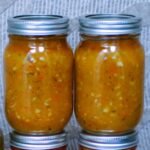
Fresh vs. frozen cranberries use in this cranberry chutney recipe
To make cranberry chutney you can use either fresh or frozen cranberries. Both work great for this cranberry chutney recipe. So, it depends on what’s available to you. Fresh cranberries are perfect when they’re in season. They will have a slightly firmer texture. Frozen cranberries are just as good—they’re picked at peak ripeness. As an added bonus, they can be used straight from the freezer without thawing. That’s because they soften quickly when cooked. Either way, your chutney will turn out delicious!
Cranberry Chutney Preparation steps:
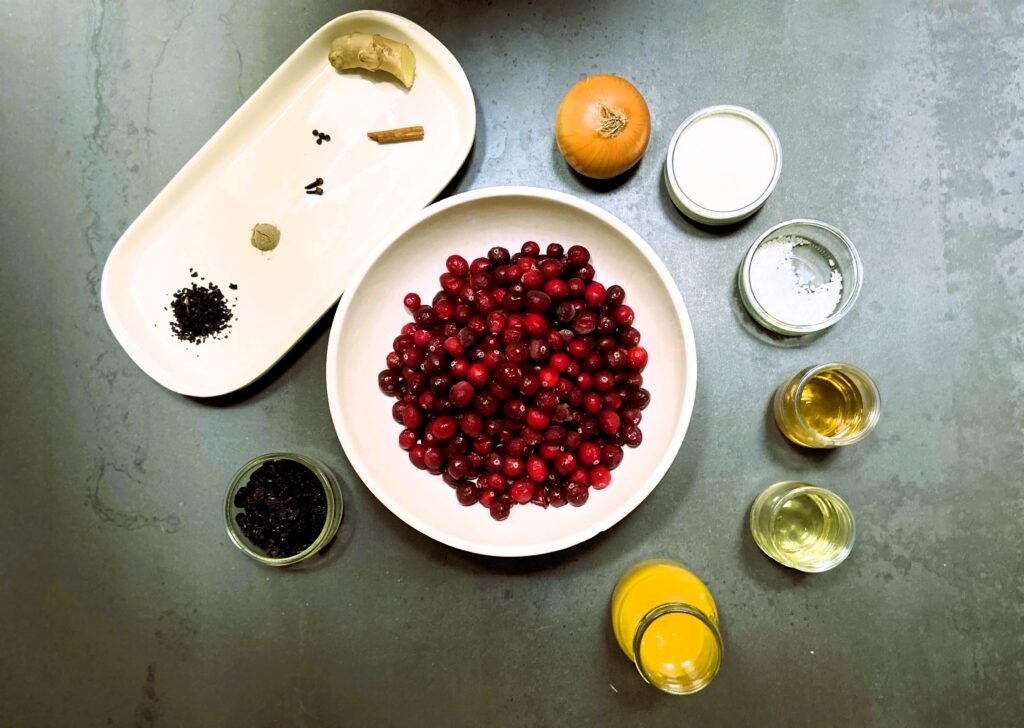

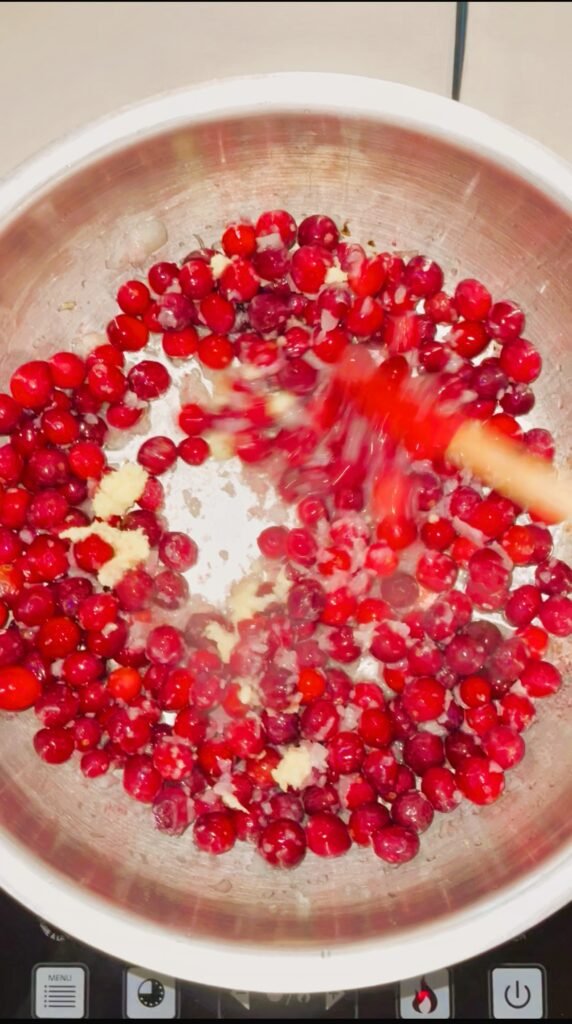
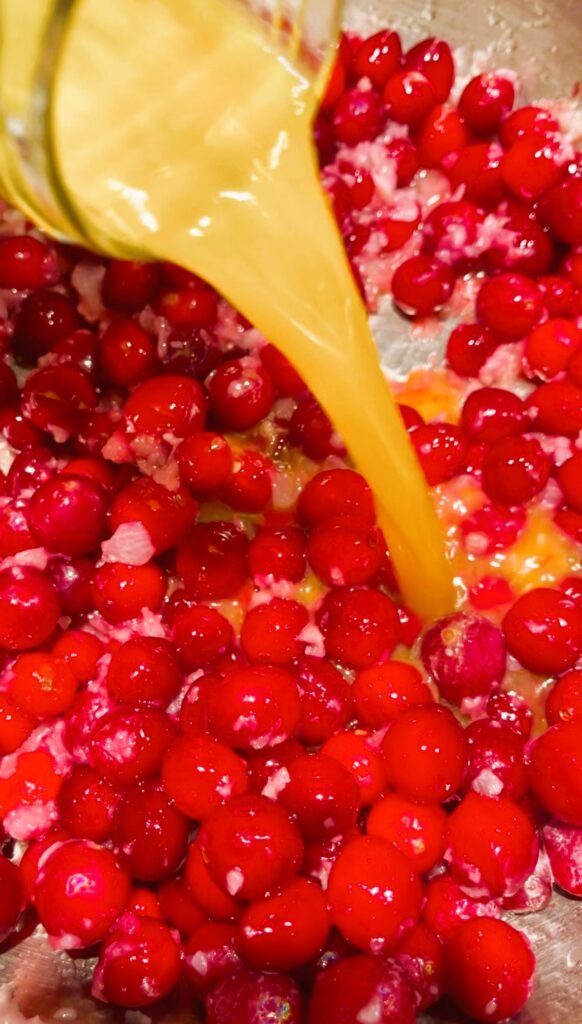
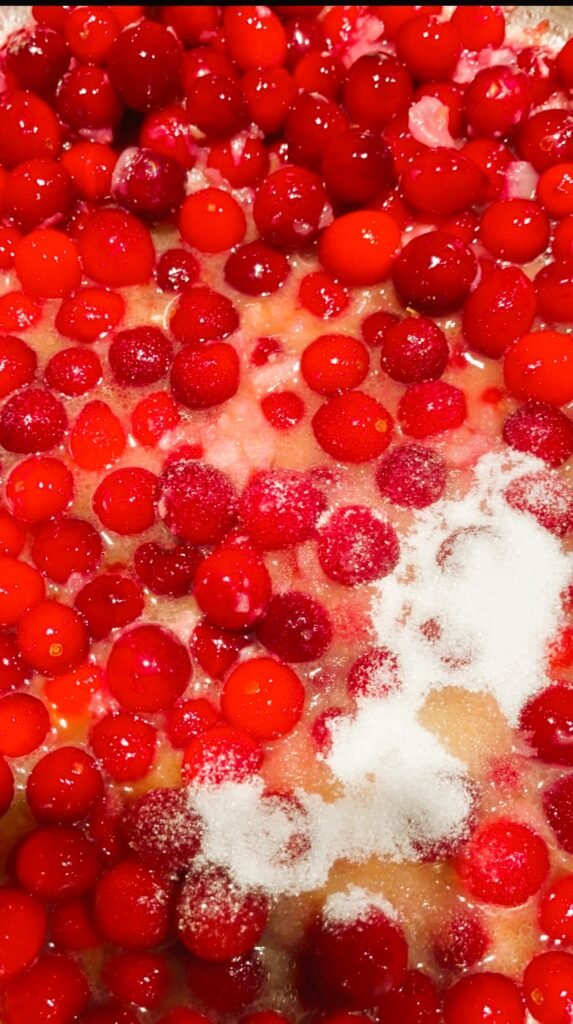
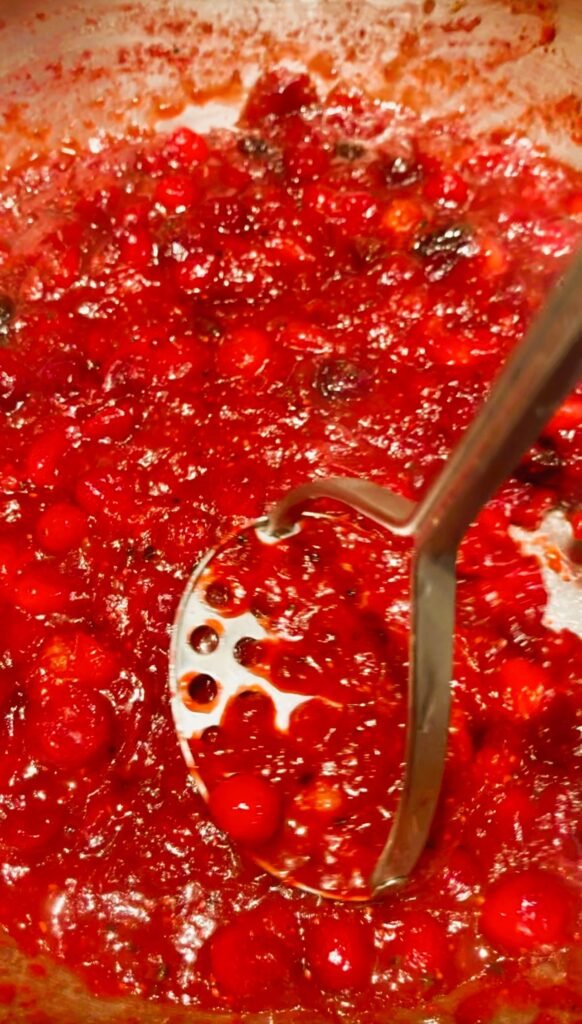
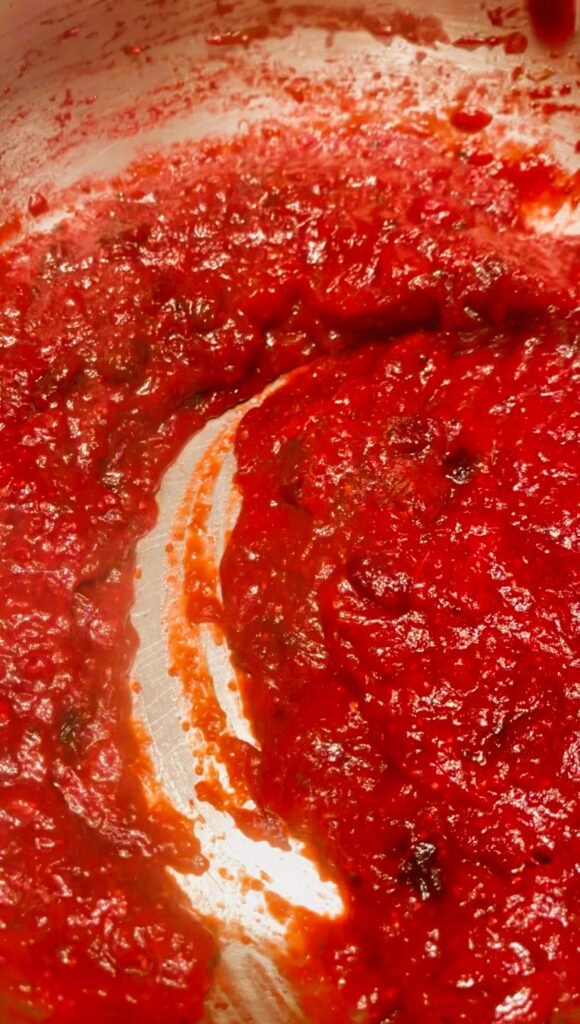
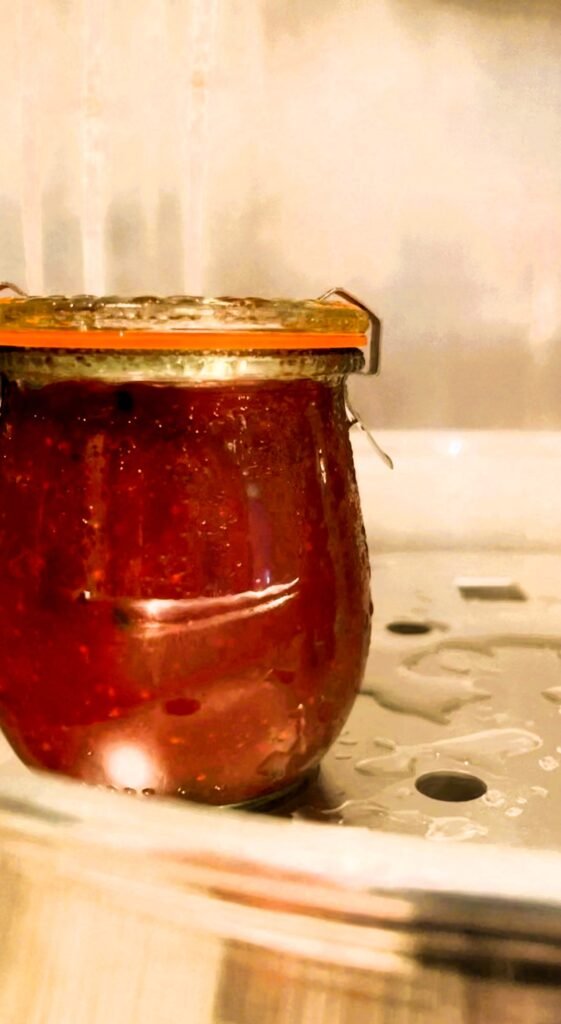
Cranberry Chutney
Ingredients
- 1 lb. fresh or frozen cranberries 450 g.
- 1 cup minced yellow onion
- ½ small cinnamon stick
- 2 whole cloves
- ¼ tsp ground cardamom
- 1 tbsp. grated fresh ginger
- 3/4 cup freshly squeezed orange juice
- 1/3 cup raisins 50 g.
- 1 tbsp salt
- ½ cup sugar
- 4 peppercorns
- 1 tsp. garlic powder or black garlic granules
- 1/3 cup. sunflower oil
- 4 tbsp. cider vinegar
Instructions
- Heat the sunflower oil in a large, heavy-bottomed pot over medium-high heat.
- Add the minced onions to the pot and stir to coat them in oil. Lower the heat and cook until the onions turn translucent.
- Add the cranberries, Stir for a minute. Then add the grated ginger, followed by the orange juice. Bring the mixture to a low boil.
- Stir in sugar and salt. Then add the cinnamon stick, cloves, ground cardamom, garlic powder, peppercorns, and raisins
- Reduce the heat to medium-low and simmer for 20 minutes, stirring occasionally.
- Remove cinnamon stick.
- Using potato masher mash the cranberry chutney mixture to your desired consistency. For larger batches, an immersion blender works well.
- Stir in the cider vinegar and cook cranberry chutney for an additional 10 minutes.
- If preserving, ladle the hot cranberry chutney into sterilized canning jars. Follow recommended canning guidelines to ensure safe storage.
Notes
Processing time guidelines for hot water bath or atmospheric steam canners
Style of Pack: Hot| Process Time at Elevations of: | |||
| Jar Size | 0 – 1,000 ft | 1,001 – 6,000 ft | Above 6,000 ft |
| Pints (16 oz, ~500ml) | 15 min | 20 min | 25 min |
Canning tools we use: If you are in the market for a reliable atmospheric steam canner, consider VKP brands made canners.
Want to learn more? Read our steam canners review.
We can’t wait to learn how this preserve recipe worked out for you. Leave us a comment below, like us on X, Facebook, Pinterest and Instagram. And remember, sharing is caring!
Frequently Asked Questions
What can I use instead of cider vinegar in this recipe for cranberry chutney?
If you don’t have cider vinegar, we recommend these two substitutes:
 White Wine Vinegar (5% acidity)
White Wine Vinegar (5% acidity)
- Why it works: Like cider vinegar, it has the required 5% acidity
- Flavor: Lighter and slightly less tangy, so it may slightly alter the taste.
- How to use: Substitute 1:1.
 Red Wine Vinegar (5% acidity)
Red Wine Vinegar (5% acidity)
- Why it works: It matches cider vinegar’s acidity level and is safe for canning.
- Flavor: Adds a deeper, richer flavor compared to cider vinegar.
- How to use: Substitute 1:1.
Remember, acidity of homemade vinegars can vary and as a result they may compromise preserve safety. It is best not to use them for home preservation. Additionally, always check the vinegar label to ensure it’s at least 5% acidity. Lower acidity levels are unsafe for canning.
What if I don’t have cardamom?
If you are worried about your cranberry chutney canning recipe safety, don’t. Remember, it’s not the spices that impact safety—it’s the pH level and adequate sterilization.
You can leave cardamom out, or substitute it with a small pinch of nutmeg for a similar warm, earthy note. In short, feel free to experiment with flavors om in your cranberry chutney recipe, but stick to the tested proportions of cranberries, vinegar, and other key acidic ingredients to ensure a safe and shelf-stable preserve. Although, if you do experiment with the spices, your chutney will taste different from our recipe. That’s not necessarily a bad thing—it just means your cranberry chutney will have a unique flavor profile!
Can I substitute cinnamon stick with powdered cinnamon?
You can swap whole spices, like cloves or cinnamon sticks, for their powdered versions if needed. Just remember that powdered spices are much stronger in flavor than whole ones. For example, if a recipe calls for 1/2 a cinnamon stick, use 1/4 teaspoon of powdered cinnamon instead for the best results. Remember, when a recipe requires a prolonged cooking time, flavor of spices tend to become more intense.
Can I freeze this cranberry chutney?
If you don’t want to can cranberry chutney, you can freeze it instead! Store it in an airtight, preferably glass, container for up to 6 months. Then, thaw it in the fridge overnight before serving. Make sure to give it a good stir first!

Can I omit the raisins in this cranberry chutney recipe?
If you’re not a fan of raisins, you can leave them out. We added raisins to our cranberry chutney canning recipe because we wanted our chutney to have a touch of sweetness and texture.
If you’d rather substitute the raisins, here are some great options to try:
- Dried Cranberries: In this canning recipe, use the same amount of dried cranberries to substitute raisins.
- Chopped Dried Apricots: Swap in 2 tablespoons of finely chopped dried apricots. These add a slightly tangier flavor and a soft texture.
- Dried Cherries or Currants: Replace the raisins with two tablespoons of dried cherries or currants. The result will be a tarter but still delicious cranberry chutney.
Is this chutney spicy?
This cranberry chutney has a mild warmth from the ginger, cardamom, and peppercorns, but it’s not overly spicy. If you prefer more heat, you can add a pinch of red pepper flakes or a dash of cayenne.
Can I make this chutney ahead of time without canning?
Definitely! This cranberry chutney stores well in the fridge for up to 1month. In fact, the flavors deepen over time, making it even better a day or two after cooking.
How can I use cranberry chutney?
Leftover chutney is incredibly versatile! These are just some of the ways you can use it:
- Pair with Meats: Serve it alongside roasted turkey, ham, pork, or chicken.
- Upgrade Your Sandwiches: Spread it on a turkey or ham sandwich to add cranberry flavor. Or, how about using it as a layer in paninis for a sweet and savory flavor upgrade?
- Enhance Holiday Cheese Boards: Pair it with sharp cheddar, brie, or goat cheese for an irresistible contrast.
- As a Side or Dip for East Indian and Asian food: Serve it as a dipping sauce for samosas or spring rolls for an unexpected fusion of flavors.
You May also like:
-
Cinnamon-Spiced Strawberry Sauce for Canning (or Fridge Storage)
This homemade strawberry sauce recipe takes classic strawberry topping to a new level with a hint of cinnamon. Perfect for canning, it’s naturally thickened without cornstarch or chia seeds. Alternatively,… read more
-
Simple Italian Tomato Sauce (That Any Nonna will Approve)
There’s something wildly satisfying about making a sauce that would make your real or imaginary Nonna proud – or at least make her pause before criticizing your stirring technique. This… read more
-
Major Grey’s Chutney Recipe: Enjoy Now And Can For Later
This Major Grey’s mango chutney recipe is made to be canned and enjoyed year-round. It rescues Tuesday night dinners and elevates holiday spreads. So next time that fancy grocery store… read more
-
Simple Way To Save Unwanted Zucchini: Make Zucchini Relish
Got zucchinis you didn’t use in time? Don’t toss them! Turn them into a tangy zucchini relish with our easy zucchini relish canning recipe. It’s perfect for burgers, hot dogs,… read more
-
Make Your Holiday Table Special With This Cranberry Chutney
Cranberry chutney isn’t just for adventurous eaters. It’s a crowd-pleaser that bridges the gap between the classic and the unexpected. Whether your guests are die-hard cranberry sauce fans or “meh”… read more
-
Surprisingly Simple Solution For Your Unripe Tomatoes: Green Tomato Chutney
Got a garden full of unripe tomatoes and no idea what to do with them? We have a surprisingly simple solution for your unwanted harvest. Our Green Tomato Chutney canning… read more
-
How To Make Malidzano – Macedonian Green Pepper And Eggplant Spread
Looking for a delicious, homemade spread to add to your pantry? Try making Malidzano, a tangy, smoky Macedonian favorite made with roasted green peppers and eggplants. Perfect as a dip… read more
-
How To Make Ajvar, Balkan-style Roasted Red Pepper Sauce
Ever heard of Ajvar? It’s a roasted red pepper sauce from the Balkans, and it’s seriously addictive. Sweet, smoky, and downright irresistible, you’ll probably end up eating it straight from… read more
-
What Is And How To Make Georgian Adjika Sauce a.k.a Hot Spicy Dip?
Adjika is spicy, garlicky, deeply aromatic, and savory. But is it a sauce, a dip, a relish, or a pesto? Whatever you call it, adjika—the best-known vegetable condiment from Georgia… read more
-
How To Make Roasted Garlic Aioli At Home
Aioli is French, but it is not fancy or difficult! Making roasted garlic aioli at home is easier than you think. No need for fancy chef skills here! Keep reading… read more



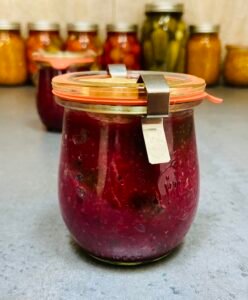
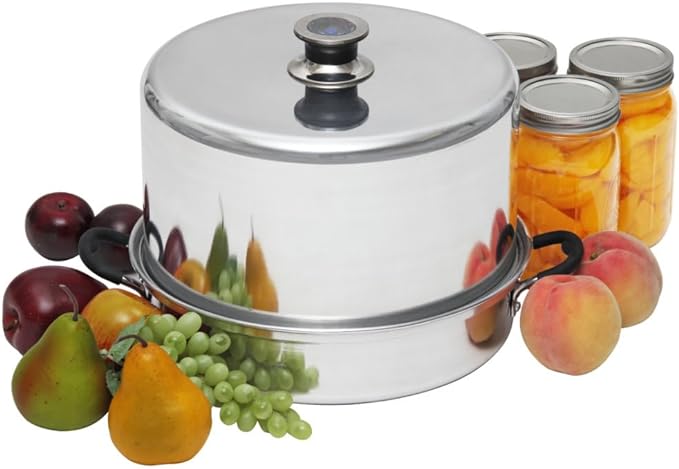
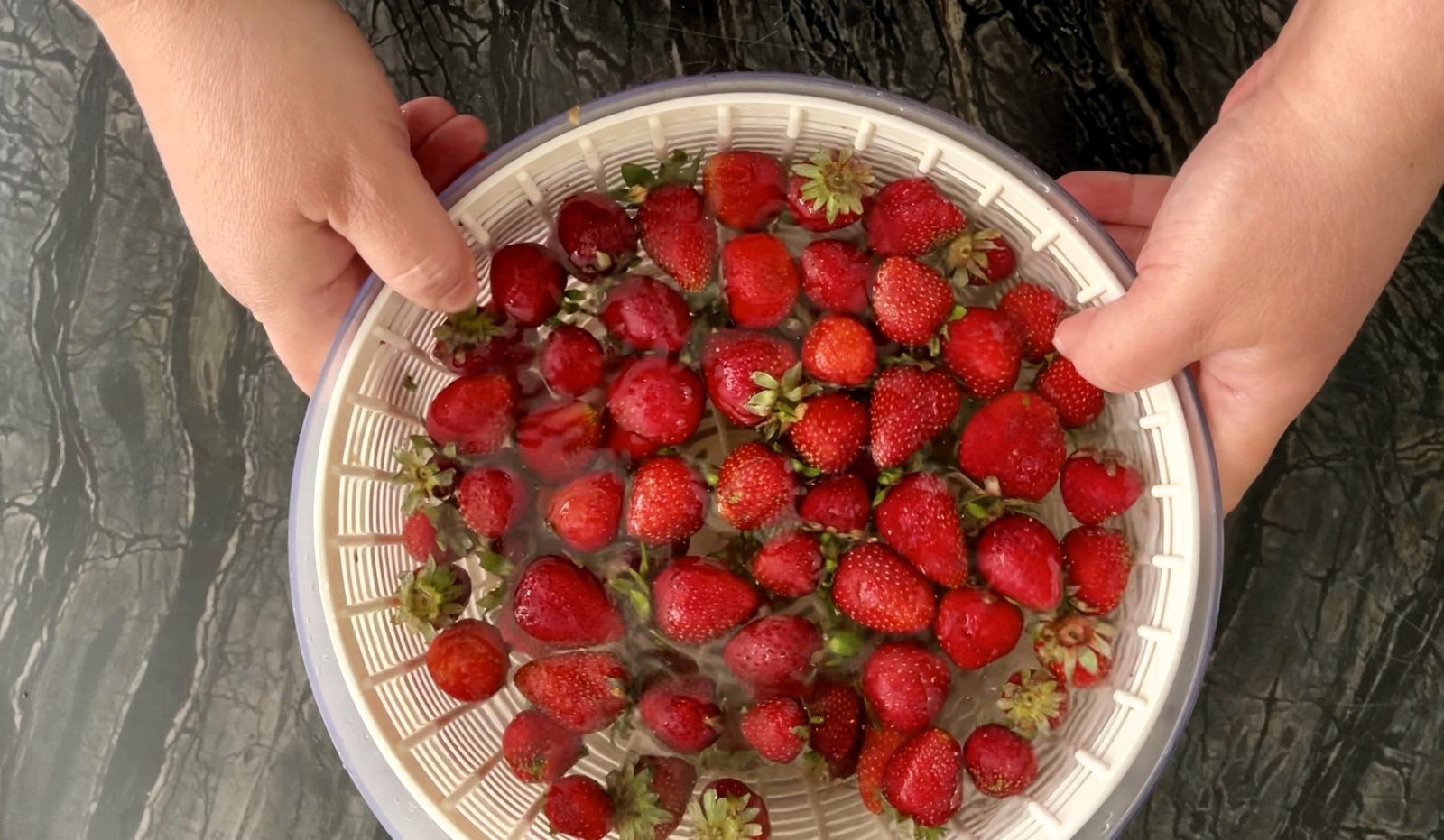
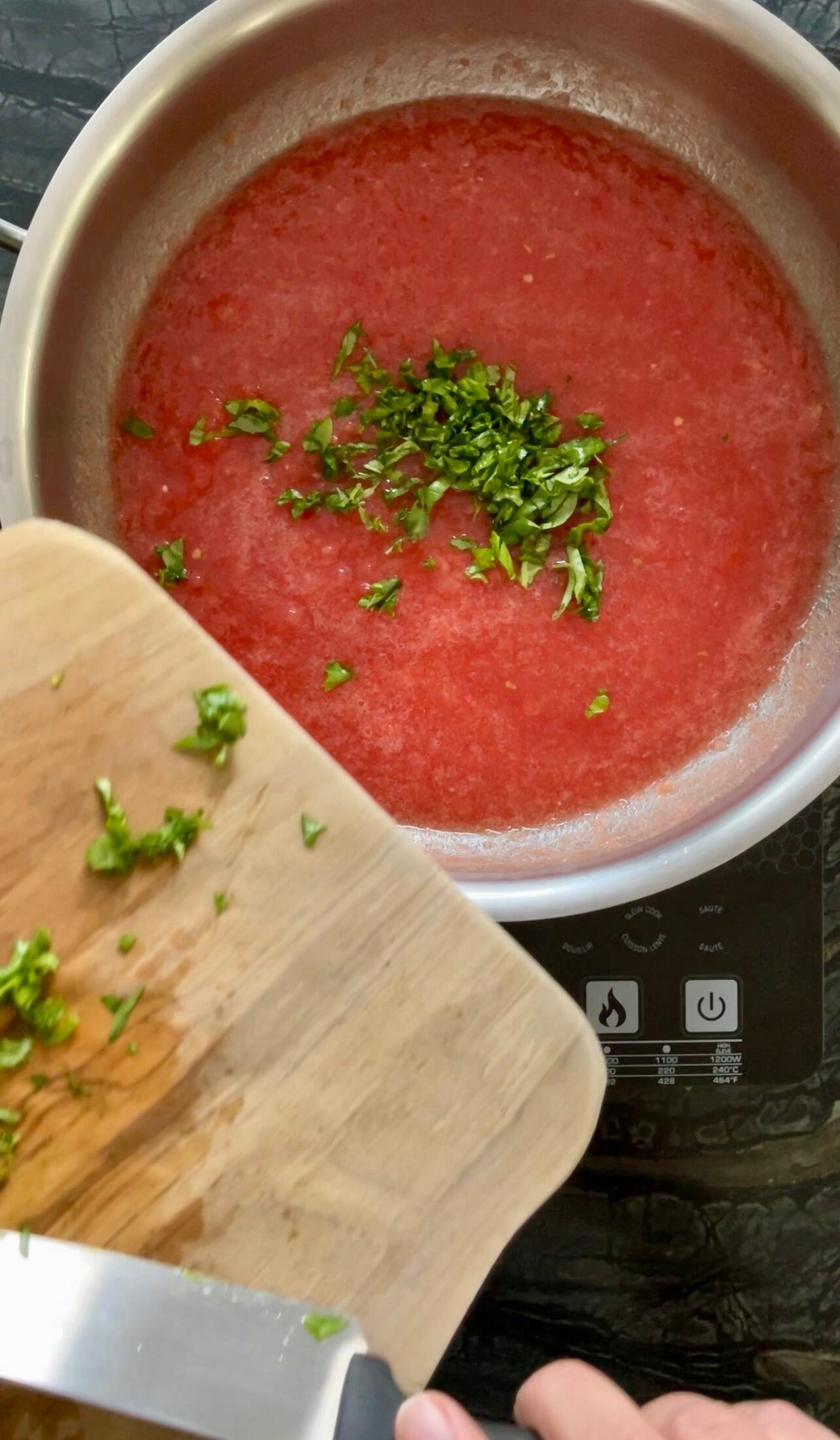

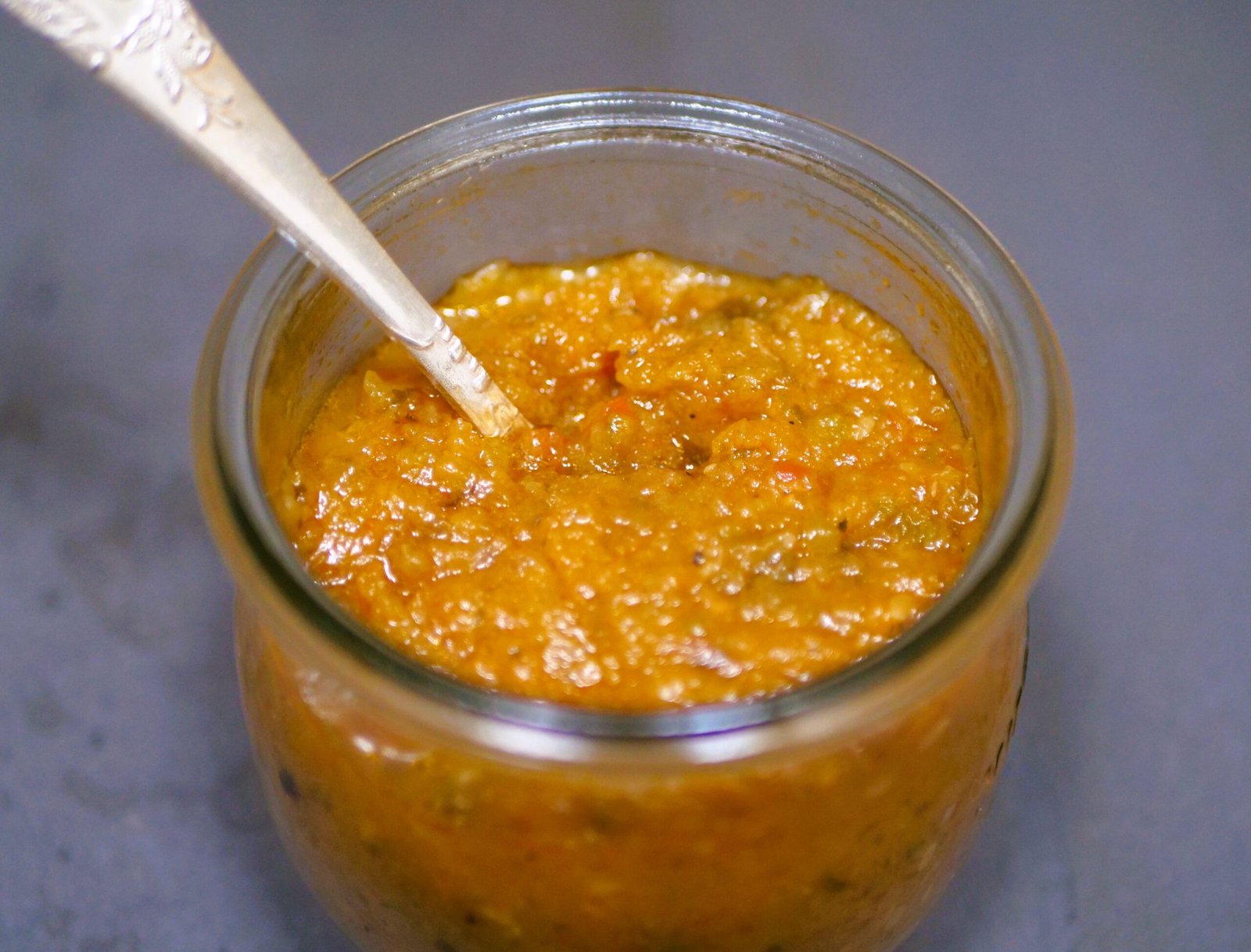
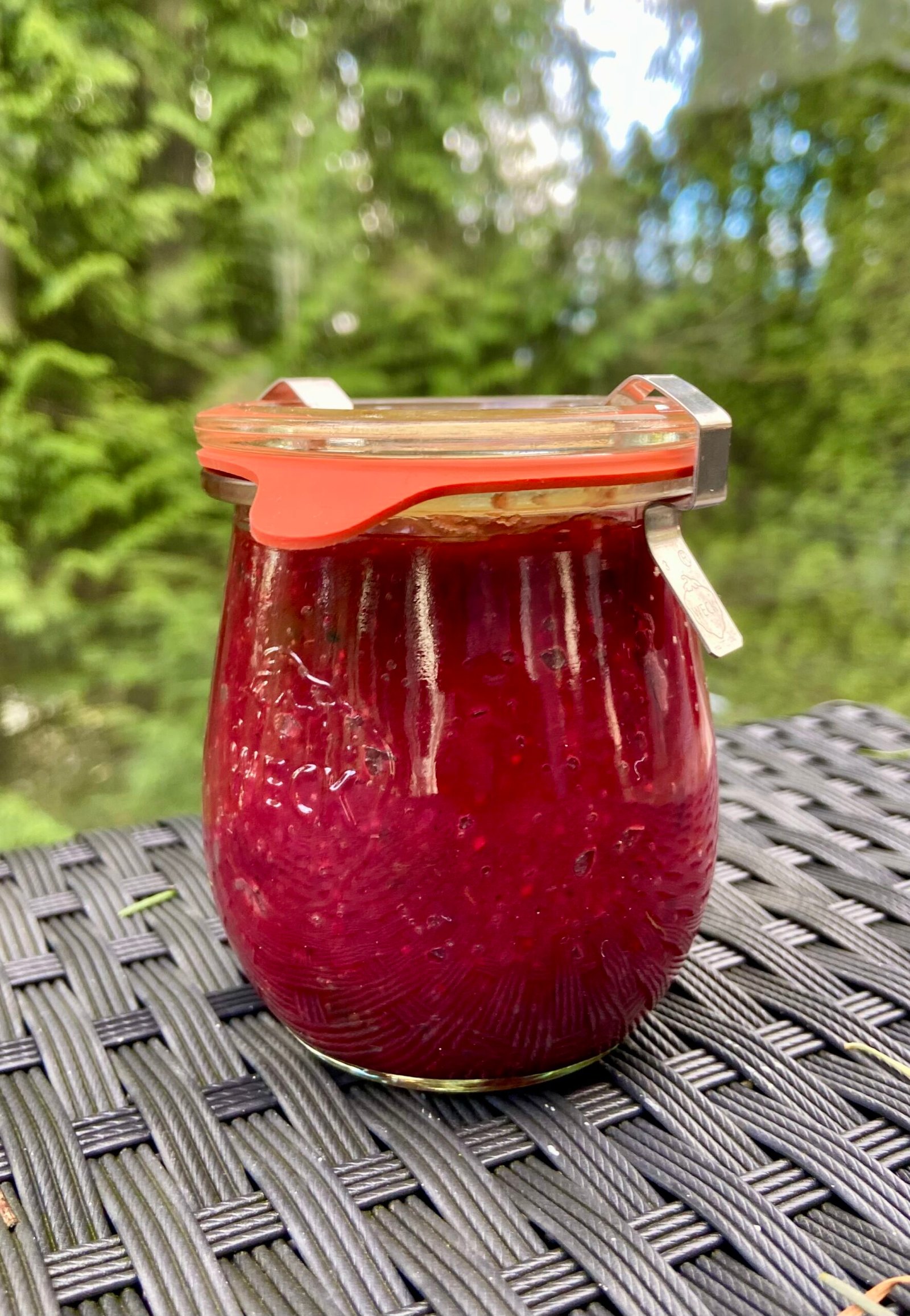
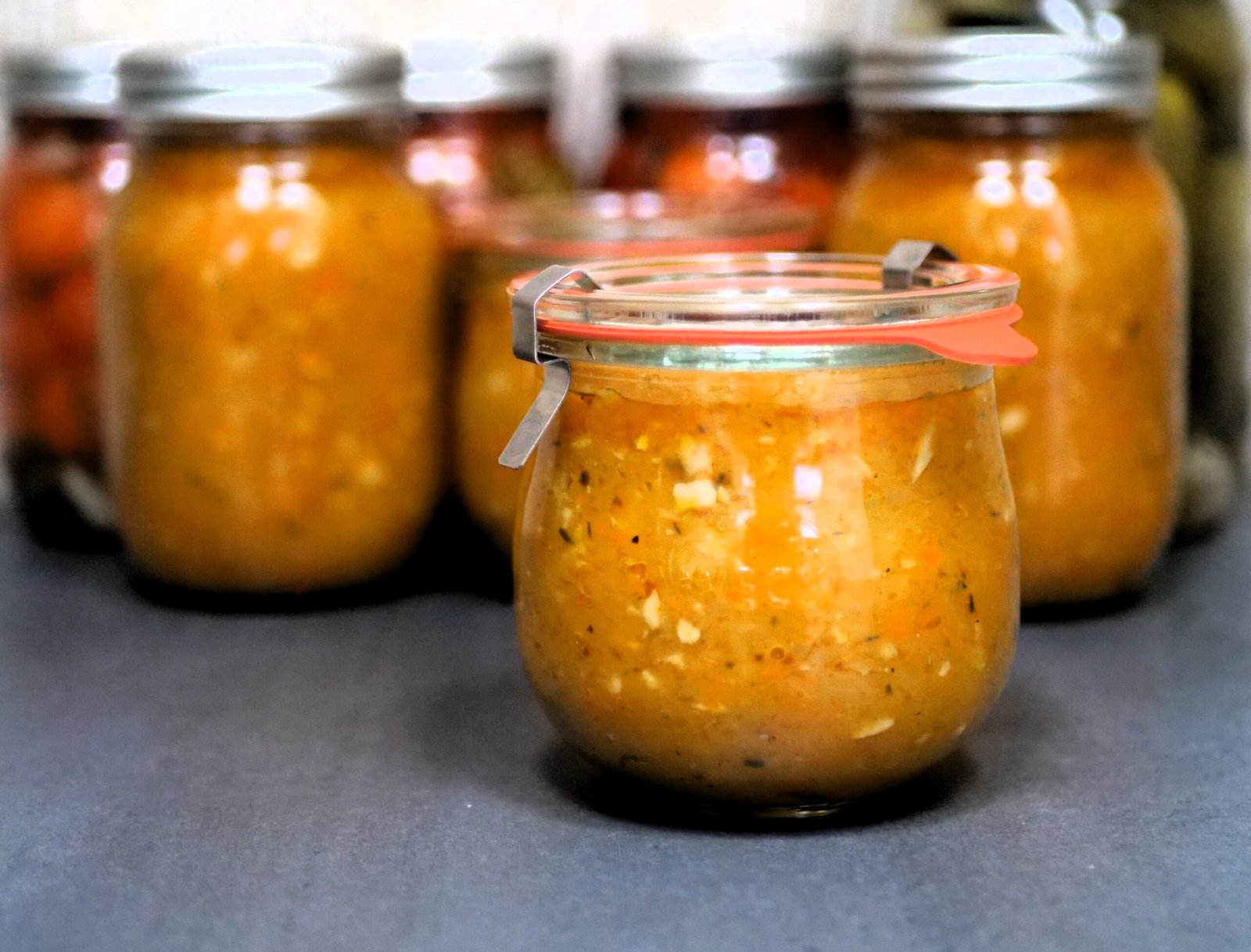

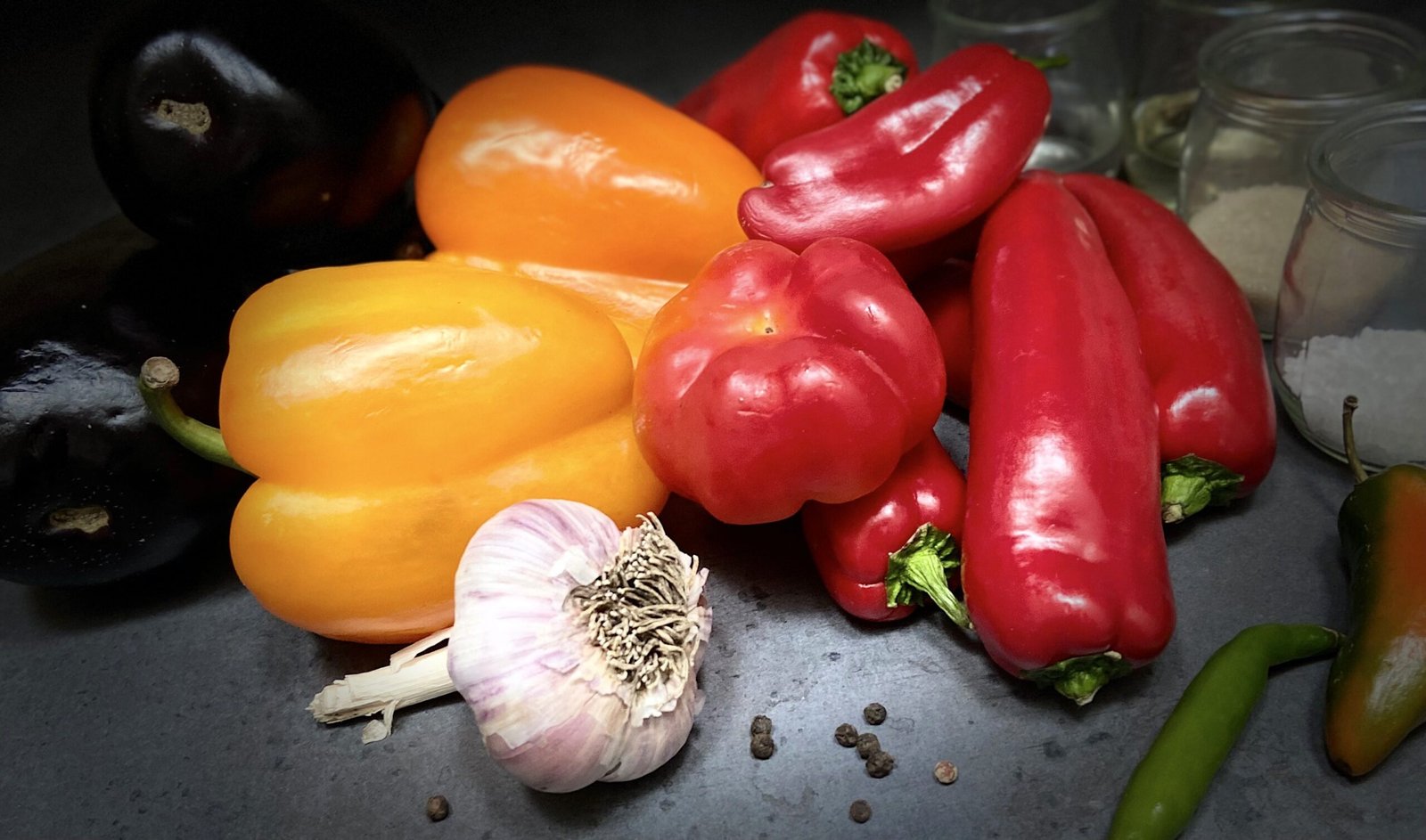
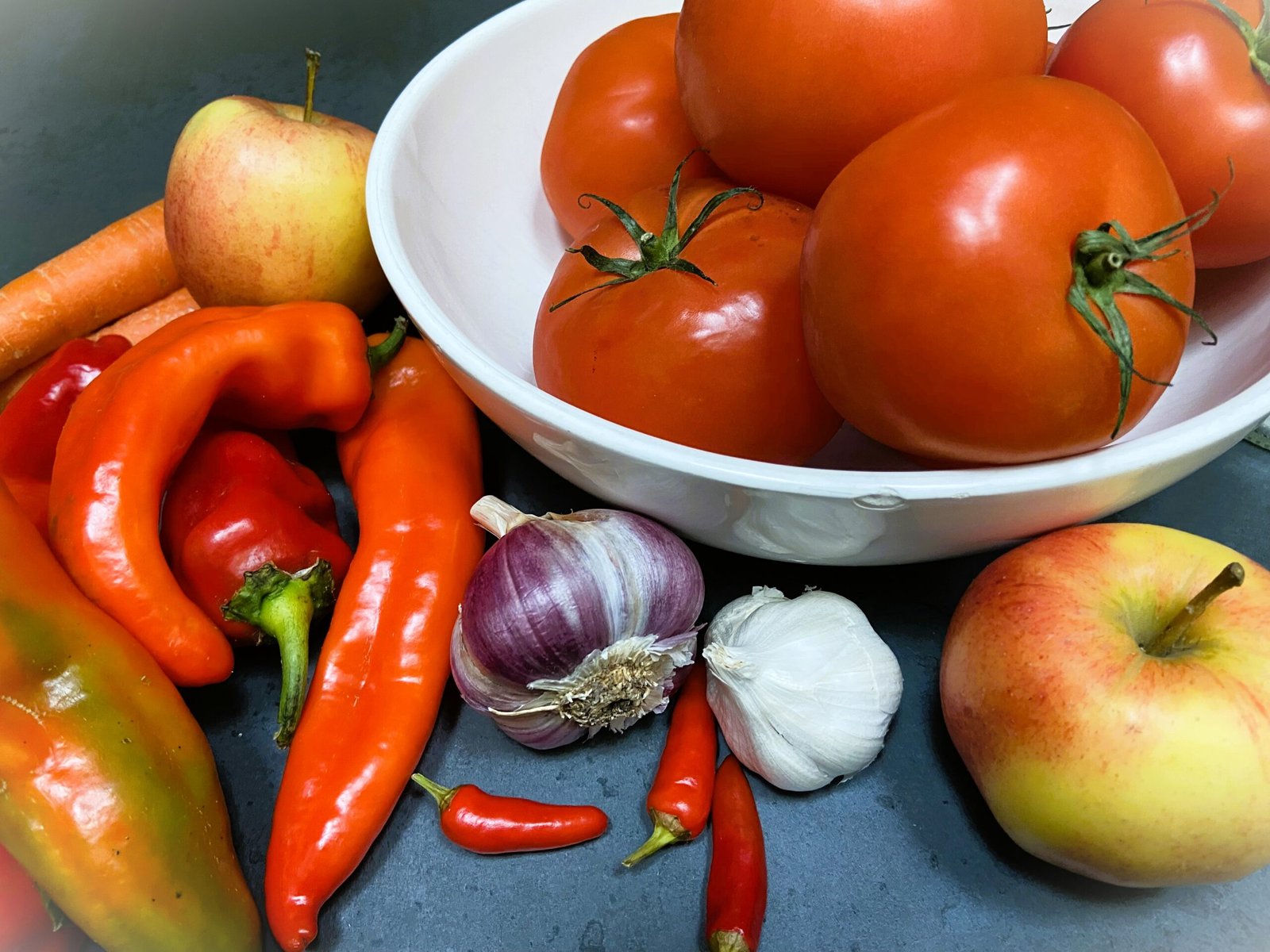
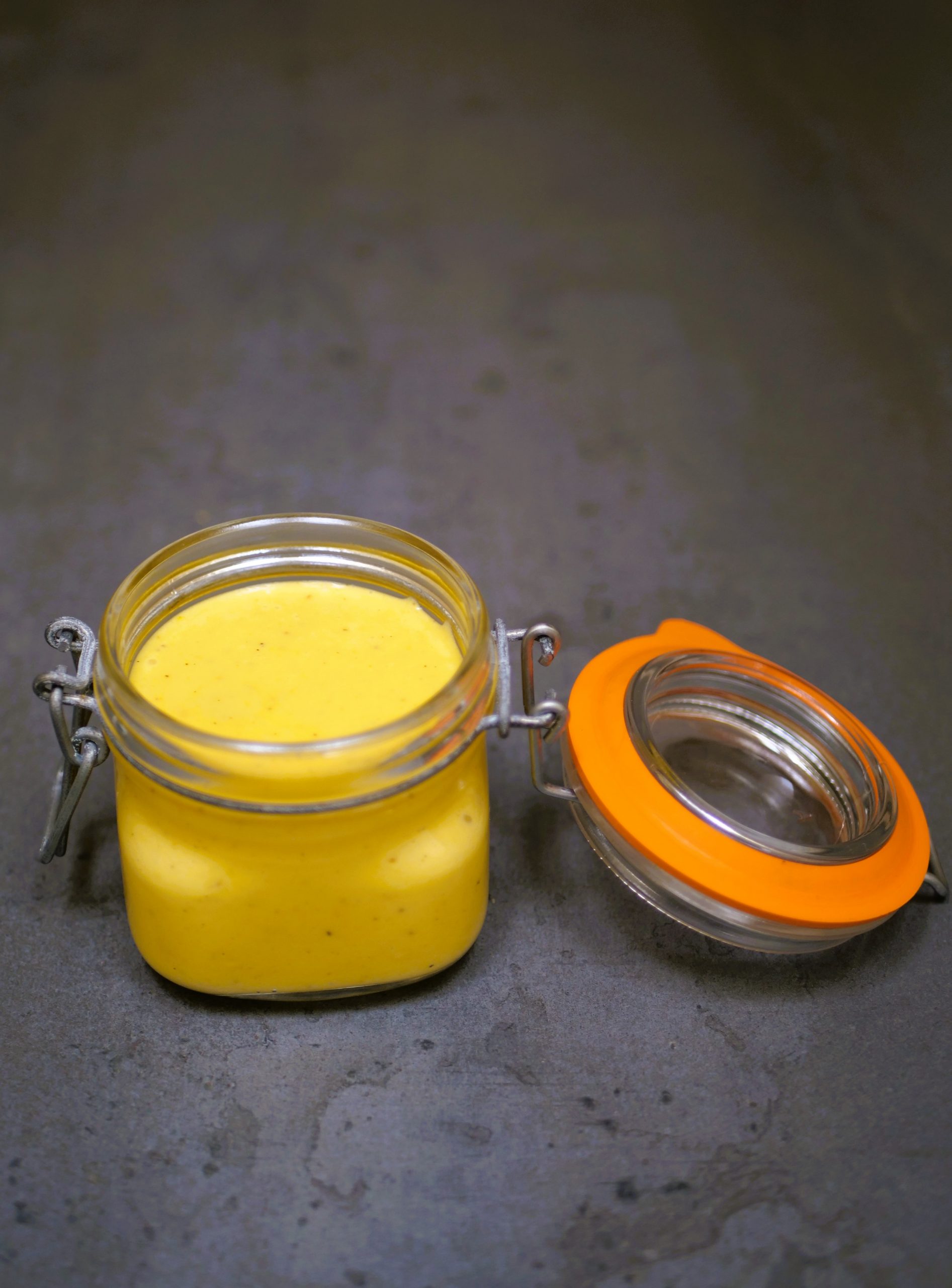


Leave a Reply